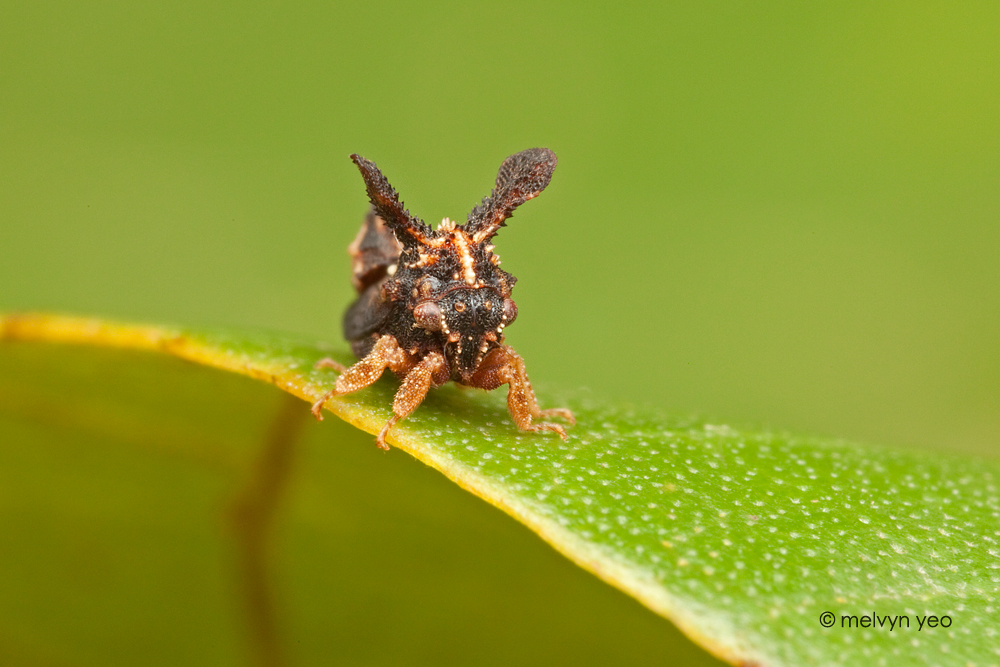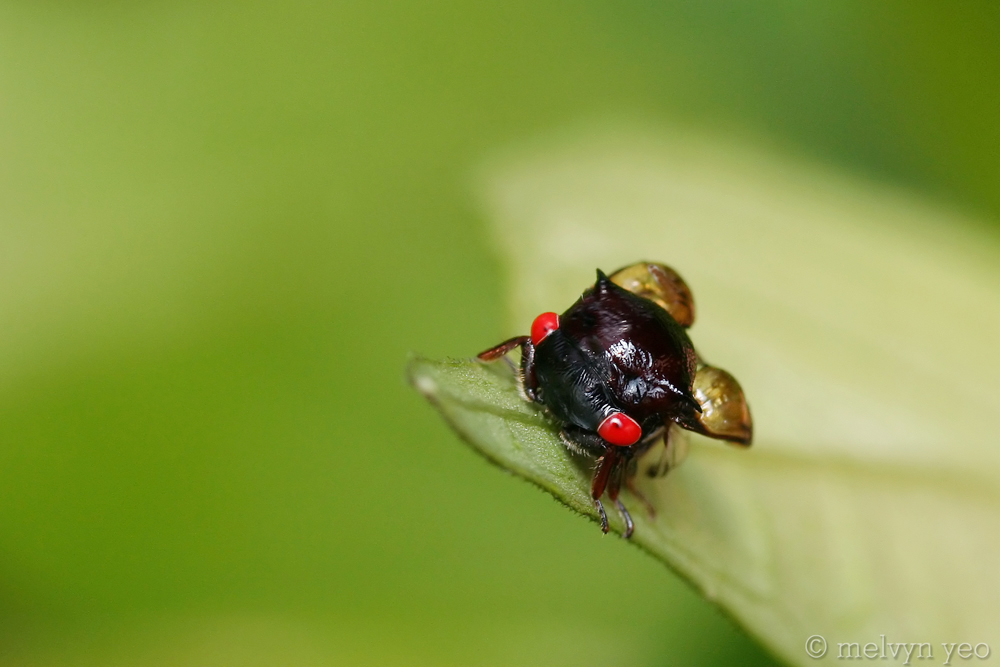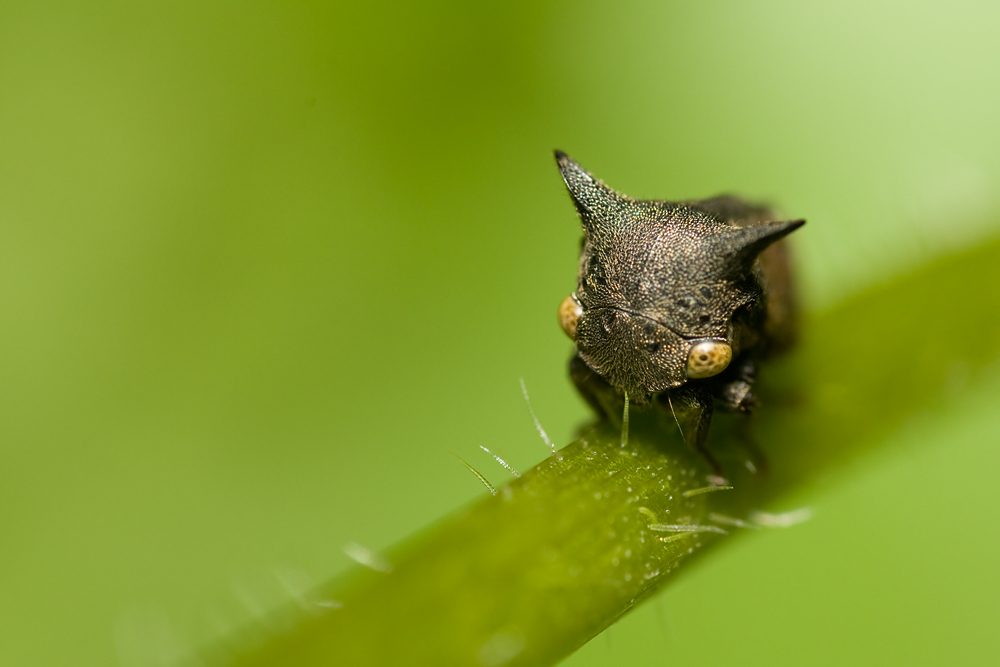 |
| TreeHoppers with young |
Treehoppers (more precisely typical treehoppers to distinguish them from the Aetalionidae) and thorn bugs are members of the family Membracidae, a group of insects related to the cicadas and the leafhoppers.
There are about 3,200 known species of treehoppers in over 600 genera. They are found on all continents except Antarctica, although there are only three species in Europe.
They are best known for their enlarged and ornate pronotum, which most often resembles thorns, apparently to aid camouflage. But in some species, the pronotum grows to a horn-like extension, and even more bizarre and hard-to-describe shapes are also found.
Treehoppers pierce plant stems with their beaks, and feed upon sap. The immatures can frequently be found on herbaceous shrubs and grasses, whereas the adults more often frequent hardwood tree species. Excess sap becomes concentrated as honeydew, which often attracts ants. Some species have a well-developed ant mutualism, and these species are normally gregarious as well, which attracts more ants. The ants provide protection from predators.
Others have formed mutualisms with wasps, such as Parachartergus apicalis. Even geckos form mutualistic relations with treehoppers, with whom they communicate by small vibrations of the abdomen
Eggs are laid by the female with her saw-like ovipositor in slits cut into the cambium or live tissue of stems, though some species lay eggs on top of leaves or stems. The eggs may be parasitised by wasps, such as the tiny fairyflies (Mymaridae) and Trichogrammatidae. The females of some membracid species sit over their eggs to protect them from predators and parasites, and may buzz their wings at the intruder. The females of some gregarious species work together to protect each others' eggs. In at least one species, Publilia modesta, mothers serve to attract ants when nymphs are too small to produce much honeydew. Some other species make feeding slits for the nymphs.
Like the adults, the nymphs also feed upon sap, and unlike adults, have an extensible anal tube that appears designed to deposit honeydew away from their body. The tube appears to be longer in solitary species that are rarely ant attended. It is important for sap-feeding bugs to dispose of honeydew, as otherwise it can become infected with sooty moulds. Indeed, there is evidence that one of the benefits of ants for individuals of the species Publilia concava is the ants remove the honeydew and reduce such growth. (Quote from wikipedia)
 |
| Mating TreeHopper |




No comments:
Post a Comment